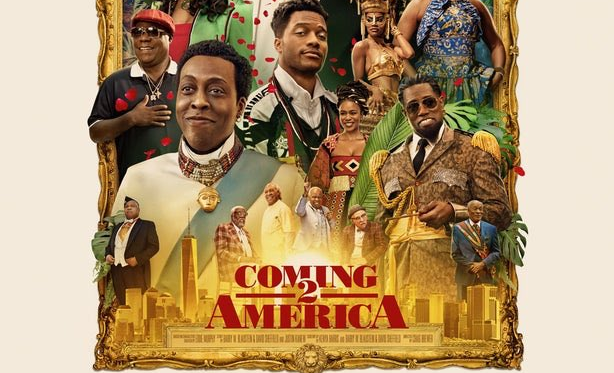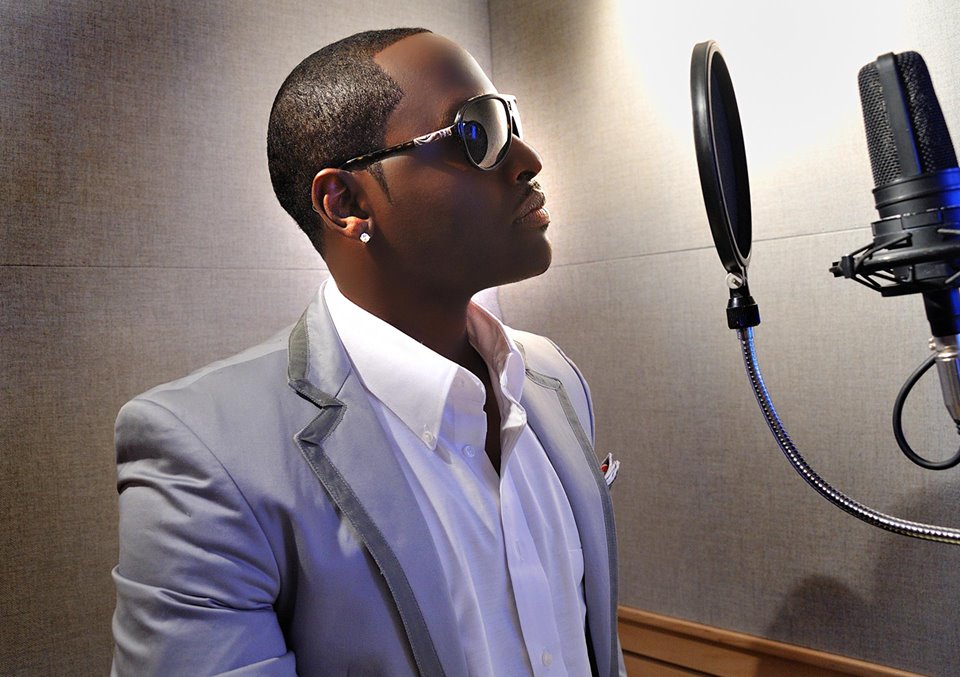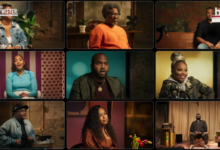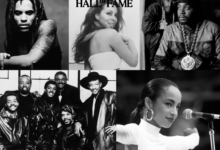UB Full[access]: For Colored Girls

UB Full[access]: For Colored Girls
The story behind The film & production!
 In 1974, a San Francisco-based poet and dancer named Ntozake Shange put pen to paper to describe the pains, struggles and paradoxes of being a woman of color in America. Today, her prose poem/play “For Colored Girls Who Have Considered Suicide/When the Rainbow is Enuf” stands as a literary classic that touched so many in its day and has continued to be influential and relevant ever since. Developed in bars, coffee houses and performances spaces in Northern California and New York City, “For Colored Girls” went on to win Tony, Obie and Outer Circle Awards in 1977, and ran for 747 performances on Broadway. The book of the play has been in print since 1975, and the most recent edition is in its 21st printing. “For Colored Girls” is taught in high school and colleges, and is a staple of theater classes and college productions.
In 1974, a San Francisco-based poet and dancer named Ntozake Shange put pen to paper to describe the pains, struggles and paradoxes of being a woman of color in America. Today, her prose poem/play “For Colored Girls Who Have Considered Suicide/When the Rainbow is Enuf” stands as a literary classic that touched so many in its day and has continued to be influential and relevant ever since. Developed in bars, coffee houses and performances spaces in Northern California and New York City, “For Colored Girls” went on to win Tony, Obie and Outer Circle Awards in 1977, and ran for 747 performances on Broadway. The book of the play has been in print since 1975, and the most recent edition is in its 21st printing. “For Colored Girls” is taught in high school and colleges, and is a staple of theater classes and college productions.
With the arrival of the feature film FOR COLORED GIRLS, movie audiences everywhere will be able to experience Shange’s watershed work anew. Adapting the play for the screen, director Tyler Perry has integrated Shange’s poetry into a dramatic narrative derived from her tales of love, betrayal, loss, treachery, resilience and sisterhood. The film brings together a star-studded, multi-generational cast of black actresses: Janet Jackson (TYLER PERRY’S WHY DID I GET MARRIED TOO?, POETIC JUSTICE); Loretta Devine (CRASH); Kimberly Elise (TYLER PERRY’S DIARY OF A MAD BLACK WOMAN, THE GREAT DEBATERS); Macy Gray (LACKAWANNA BLUES); Thandie Newton (CRASH); Phylicia Rashad (“The Cosby Show”); Anika Noni Rose (DREAMGIRLS); Tessa Thompson (MISSISSIPPI DAMNED); Kerry Washington (the upcoming NIGHT CATCHES US); and Whoopi Goldberg (THE COLOR PURPLE).
FOR COLORED GIRLS is Perry’s tenth film with Lionsgate, and the first production of his 34th Street Films. Perry’s flagship company, Tyler Perry Productions, is home to his family-friendly, inspirational comic dramas that have made him one of America’s most successful filmmakers, and elevated his signature creation, Madea, to star status. Perry launched 34th Street in 2008, conceiving the imprint as a specialty arm that would also work with outside filmmakers. When the idea of a film of “For Colored Girls” came up at 34th Street, Perry was enthusiastic, but finding a workable script proved difficult. Finally, Perry decided to tackle the project himself. “‘For Colored Girls Who Have Considered Suicide/When the Rainbow Is Enuf’ is a brilliant, important work that should have a place in film history,” he states. “It had been 35 years, and still it hadn’t been made into a film.”
But the play certainly presented challenges to adapt, given its unorthodox structure, its poetic text and, not least, the reverence it commands as a creative and cultural landmark. Perry did not approach the project lightly. “This is my tenth film, and it took me nine to feel ready to tackle something like this,” he acknowledges. “I was nervous because it’s such a powerful, iconic piece and there are so many people who live, eat, breathe and die ‘Colored Girls.’ I had to be sure I could get it right.”

Perry met with Shange in New York City. “We had a conversation about the play and making it into a film, and what I saw for it,” he recalls. “All the help I could ask for, Ntozake gave me. And she told me, ‘Do what you feel.’”
Shange welcomed the idea of her work reaching new generations, and notes that she had no hesitation about handing over the reins to Perry. “‘For Colored Girls’ is almost 40 years old and I let her grow up and go away from me,” the author comments. “I realized that the generation of women who had come of age with me, now have a generation of children and grandchildren that need to be exposed to this legacy. I’m grateful Tyler chose my work. My readers need to see it.”
In shaping the film’s narrative, Perry turned to Shange’s original text. “Ntozake told me that each poem represented a different experience from a woman,” he explains. “I thought the best way to express that in cinematic form was through an ensemble drama, with women of different generations, at different stages in their lives. I chose about fourteen of the poems and wrote a film around them, while leaving their language intact.”
Producer Roger Bobb has been working alongside Perry since DIARY OF A MAD BLACK WOMAN. He notes that the filmmaker is in many ways uniquely positioned to adapt a play about women’s lives. “Women are usually the backbone of Tyler’s stories. Maybe because he was primarily raised by women – his mother, his aunt and his grandmother – he is comfortable writing women’s emotions and perspectives. Also, Tyler has adapted his own plays for his films, which I think makes a difference. It’s very difficult to adapt a play for the big screen, to open it up from a confined space and give it movement and visual texture. And he is accustomed to doing just that.”
Perry integrated the verses of Shange’s poem into the film’s dialogue. Some of the poems lent themselves to conversational dialogue; others flowed as a form of stream-of-consciousness speech from the characters Perry created. The dialogue that he wrote would serve traditional functions of advancing story and illuminating character, but also complement Shange’s voice. “I knew I could not tamper with the poems. And the dialogue that I wrote had to have a certain rhythm so it would flow into Ntozake’s poems. In that way, I felt I could follow my vision while staying true to the original play.”
The play’s opening poem, “Dark Phrases” became a choral round that introduced the film’s nine major protagonists – Crystal, Gilda, Tangie, Kelly, Alice, Yasmine, Juanita, Jo and Nyla – on an ordinary morning; each took up the poem’s verses in turn as she starts her day. Perry placed most of his characters in Harlem, inspired by the “Colored Girls” poem called “I Used to Live in the World.” “In that poem, a woman living in Harlem describes her ‘universe of six blocks.’ So a lot of the film takes place in within a small geographic radius, where you have strangers crossing each other’s paths as they live their lives,” says Perry. “All of their paths finally converge around one woman and one woman’s struggle, and that is the story of Crystal in the poem ‘A Night With Beau Willie Brown.’”
Paul Hall soon joined Perry and Bobb to produce FOR COLORED GIRLS. Hall, who had seen the original Public Theatre production, was impressed by Perry’s screenplay. “Tyler’s challenge was to take what is essentially a choral poem and make it a piece of cinema. And what he did is pretty remarkable,” says Hall. “He organically wove the poetry into the action, so that actors wouldn’t necessarily stop and say, ‘I’m reciting a poem now.’ It was beautiful. It maintained what Ntozake’s original work was about, but it also took it into the present and kept it relevant.”
The film is the third collaboration between Perry and actress Janet Jackson, who first starred for the filmmaker in TYLER PERRY’S WHY DID I GET MARRIED? Jackson recognized that FOR COLORED GIRLS would be a once-in-a-lifetime experience. “It was an exciting opportunity to be part of a multi-generational cast of African-American actresses. I never dreamt that that would happen to me,” she marvels. “I remember the play being on Broadway when I was a kid; as a matter of fact, I came to visit my brother in New York when he was doing ‘The Wiz,’ and it was playing then. I was ten years old. Thirty-three years later, to be part of a film version – it’s incredible.”
Jackson’s character, Jo, is high powered business woman who has virtually willed herself to forget her tough upbringing. “Jo’s very driven, and she’s not the nicest person on the block,” comments the actress. “She doesn’t want to be reminded of her past – how she grew up, where she grew up, what it was like. She wants nothing to do with it, nothing to do with the people that come from there. She just wants to look toward the future and what she’s focused on now, which is her fashion magazine. That’s her baby.”
Whoopi Goldberg was intrigued to learn that Perry was planning a film of “For Colored Girls.” As it happened, Goldberg had been in the midst of planning a Broadway revival of “Colored Girls” when the 2008 financial meltdown scuttled the project. She was keen to be part of the film, and took on the role of Alice, a white-clad, Bible-toting fanatic who spends her days proselytizing on Harlem’s streets. “Tyler’s an extraordinary young man, and I wanted to work with him. You don’t see many moguls who have their own movie studio, and who are able and self-reliant. That’s an unusual person to me,” Goldberg comments. She found Alice compelling on a number of levels. “Alice is intent on purifying herself for God. In her mind, that means wearing white. Except she can’t quite give it a hundred percent, because she does like to buy odd, colorful socks. I think she gets them for, like, sixty cents, and it doesn’t matter what the pattern is. I think at one time she was all that her socks are; now the socks are the only sort of whoosh that exists for her.”
Perry turned to his DIARY OF A MAD BLACK WOMAN star, Kimberly Elise, to portray the pivotal role of Crystal, a quiet woman grappling with unrelenting challenges at home and at work. The actress notes that she and her co-stars shared a passion for Shange’s play. “We all know ‘For Colored Girls.’ It’s sort of a rite-of-passage play for an actress of color,” she comments. “When Tyler called me and told me that he was going to be making a feature film of it, I knew that I wanted to be a part of it. ‘For Colored Girls’ is such an important piece, but a lot young people don’t get out to the theatre and aren’t aware of it. To marry such magnificent material with a medium that will reach multiple generations seemed perfectly logical and totally appropriate and absolutely something I wanted to be a part of.”
In Shange’s play, Crystal is the longtime sweetheart of a returning Vietnam vet, Beau Willie Brown, the father of her two children; in the film, Beau Willie is one of the many volunteer soldiers who have served in Iraq and Afghanistan. Battling Post Traumatic Stress Disorder (PTSD), Beau Willie has sunk into a dark, volatile emotional state, but Crystal cannot bring herself to leave him. “Crystal’s relationship with Beau Willie goes back to childhood, so she has a sense of loyalty to him and recognizes that he was once a good man. So she’s carrying the weight of that, the love of this man who was once so beautiful and wonderful, who’s now damaged and dangerous and scary,” Elise observes. The actress created an air of stillness around her character, who confides in no one. “Crystal is like so many women who walk through life and you have no idea that they’re troubled and pained; they keep it very deep inside and do what they have to do to forge ahead.”
Loretta Devine was a young actor in graduate school when “Colored Girls” became an Off-Broadway sensation in 1976. She successfully auditioned for a role, but had to turn it down when she was unable to obtain the scholastic leave of absence. She vividly recalls the impact that Shange’s play stirred. “Ntozake Shange was new to everybody, and it was really a revolutionary piece. At that particular time, there wasn’t any theatre about black women and the things that concerned them most in their lives. Ntozake touched on women’s true emotions and experiences; there were poems about race, about abuse, about love, about date rape, about abortion. She didn’t leave out anything.”
Having missed the chance to appear in the original New York production, Devine was thrilled when Perry tapped her to play Juanita, a nurse who has opened a women’s health-and-wellness clinic at a Harlem community center. Juanita doles out condoms and a message of empowerment to young women, but struggles in vain to resist the charms of her two-timing boyfriend. “Juanita’s an older woman that’s still trying to find someone to love her,” says Devine. “And she’s holding onto a lot of the things that a younger girl would hold onto. She wants to be attractive and vivacious, so she’s put her braids in and she has her green nail polish and short dresses and high heels. And she projects a happiness that may not really be totally true.”
Juanita’s tangible yearning for love stands in marked contrast to the proudly anti-romantic attitude of Tangie, the sharp-tongued bartender played by Thandie Newton. Tangie claims her right to pleasure for its own sake, refuses to let her conquests dawdle in her apartment, and apologizes to no one, least of all her mother, Alice. Observes Newton, “Tangie is feral. She is fierce, she is uncompromising; she is destructive, of herself and everything around her. She is in a lot of pain and she vents that pain with alarming effects, some very comical, some very upsetting, but all truthful.”

A frequent target of Tangie’s wrath is her disapproving next-door neighbor, Gilda, a widow who is also the building’s manager. Played by Phylicia Rashad, Gilda is somewhat sphinx-like, a woman who keeps tabs on her fellow residents, while offering little information about herself. As Rashad puts it, “Gilda’s not an easy person to know, but as the story unfolds you learn more about her.”
Gilda’s concern about her other neighbor, Crystal, prompts her to place a call to the city’s Child Welfare Agency. Kerry Washington portrays Kelly, the social worker who responds to that call. Kelly’s emotional attachment to her job is further complicated by her own desire to start a family with her detective husband. Comments Washington, “Although overwhelmed with the task, Kelly is all about helping and ensuring the safety of children. Her story is ultimately about her relationship to family and the value she places on the role of motherhood.”
The function of dance in Shange’s original play finds an echo in Anika Noni Rose’s character, the dance instructor Yasmine. At her studio located in the same Harlem community center as Juanita’s clinic, Yasmine is both a teacher and a mentor to high school girls. Says Rose, “Dance gives Yasmine’s students hope and a language to express themselves without words. Girls at her studio are eligible for a college scholarship; Yasmine got the scholarship ten years ago and now she’s able to help other girls get it. She’s very community-minded and she just radiates good feeling.”
One of those scholarships has been offered to Alice’s youngest daughter, Nyla, played by Tessa Thompson. Fresh out of high school and alive with the youthful optimism, Nyla faces a personal crossroads that eventually leads her to the cramped, dirty apartment of a woman named Rose. Portrayed by singer/actress Macy Gray, Rose is a ghostly woman for whom the universe has indeed shrunk to six blocks. Thompson notes that Nyla’s crisis “forces her to grow up,” and fundamentally changes her relationship with her mother. Says Thompson, “To Alice, Nyla has always been the golden child, especially in contrast to Tangie, her older sister. In a lot of parental relationships, I think there is a pivotal moment when you become your own person, separate from your parents. Oftentimes that happens with some sort of fall from grace, and that’s the case with Nyla.”
Shange’s play ultimately is about overcoming pain and adversity, much of it rooted in the thorny realm of romantic relationships. In adapting her stories of love, deceit and abuse, Perry created several male characters, each with a distinct identity, back-story and emotional shadings. At the same time, the filmmaker sought to remain true to the play’s female perspective and its depiction of the unhappiness and trouble caused by husbands, lovers and semi-strangers. “‘For Colored Girls’ is about a black woman’s journey, a black woman’s experience,” Perry affirms. “Ntozake Shange had written all of these women from her head, and my job was to tell their stories. So I tried to create male characters that were believable in their flaws, and not just cardboard bad guys.”

Michael Ealy (SEVEN POUNDS) joined the cast as the tormented Army veteran Beau Willie. In preparation for the role, Ealy did research on PTSD, and the obstacles recent veterans have faced in seeking treatment for it. “Beau Willie’s struggling to come to grips with the trauma that he’s experienced in battle, but he just can’t get a hold of it. It’s eating him alive on so many levels,” the actor remarks. “I think Tyler did a wonderful job of humanizing Beau Willie, and all the men in the story.”
Rounding out the cast are Hill Harper (CSI: NY) as Donald, a detective who is a loving, understanding husband to Washington’s Kelly; Omari Hardwicke (KICK-ASS) as Carl, a stockbroker who is married to Jackson’s Jo; Richard Lawson (HOW STELLA GOT HER GROOVE BACK) as Frank, the smooth-talking, faithless lover of Devine’s Juanita; and Khalil Kain (“Girlfriends”) as Bill, a seemingly nice guy who woos Rose’s Yasmine.
FOR COLORED GIRLS had a thirty-one day production schedule: filming for six days on location in New York City, and twenty-five days in Atlanta, both on location and at the Tyler Perry Studios. Perry worked with his key collaborators, including his longtime production designer, Ina Mayhew, and director of photography Alexander Gruszynski (KINGFISH: A STORY OF HUEY P. LONG, Perry’s I CAN DO BAD ALL BY MYSELF) to create a look for the film that was grounded in day-to-day realism. Mayhew scouted apartments around Harlem, getting a feel for the different kinds of homes tucked away behind anonymous hallways, and identifying the blocks and buildings for the film’s exterior sequences. She searched the city for the kind of well-worn, seemingly endless stairway that Perry had in mind to introduce the Harlem apartment building where Crystal, Tangie and Gilda live; once she found the staircase, she made detailed diagrams so it could be rebuilt at the Tyler Perry Studios in Atlanta.
The colors that identified Shange’s seven women are subtly woven into the fabric of FOR COLORED GIRLS. Individual shades were matched to characters by virtue of their personalities and states of mind, with Jo being red; Juanita, green; Yasmine, yellow: Nyla, purple; Crystal, brown; Kelly, blue; and Tangie, orange. Perry added another color, white, for the pious Alice. The given colors were primarily indicated through make up and wardrobe. Washington praises costume designer Johnetta Boone (CADILLAC RECORDS) for her light yet impactful approach to dressing the characters. “The wardrobe is amazing,” she says. “Everybody looks so beautiful within the context of their colors. Johnetta did such a wonderful job of honoring the importance of color without being imprisoned by it.”
Many of the film’s stars had worked together in the past; for example, Elise and Newton were in BELOVED; Rose and Rashad co-starred in the recent stage revival of “Cat on a Hot Tin Roof”; and Newton and Devine were both in CRASH. But all knew that making FOR COLORED GIRLS would be an experience unlike any other in their professional lives. “It was great to be able to share this experience with such talented, phenomenal women,” enthuses Washington. “We’re always kind of privately celebrating each other from home, or admiring each other from the dark of the movie theatre. Suddenly, we got to play in each other’s presence, and it was amazing. I felt like I was constantly pinching myself.”
The film marks Goldberg’s first dramatic feature film since 1999’s GIRL INTERRUPTED, and she was filled with admiration for her co-stars. “These are real actors. They understand the artistry of what we do as actors. This was a great opportunity for me to play with other people who do what I used to do.”
All the actors credit Perry for establishing a collaborative environment in which they felt free to take risks, make suggestions and generally explore the full measure of their characters. Says Elise, “Tyler Perry is just a gift to work with; I have so much respect for him. We met doing DIARY OF A MAD BLACK WOMAN and we formed a wonderful working relationship on that film, which we got to continue on this film. He cares about the actor and gives the actor much trust. And in looking at FOR COLORED GIRLS as a whole, you see Tyler’s care, respect and understanding of the black woman. At the same time, he recognizes where he doesn’t know things, because he’s not a woman; he hasn’t walked the journey that we’ve walked. He left himself open to receive what it is we have to offer — as women, as actresses — having lived that experience. It was a very powerful collaboration; I can’t imagine anyone else directing me in this piece.”
Rashad was equally impressed. “Tyler was very focused in his work, and his attention to detail was astounding. He knew how to pull things from the actors without stressing them. He was on a mission to create and to present something new, and I think he succeeded.”
Perry, in turn, was dazzled by his cast. “These women are just stellar,” he states. Any concerns he might have had had about importing Shange’s verses to film dissolved in the face of the cast’s performances. “I always respected the brilliance of what Ntozake had written. But until I heard those words spoken through these women – Phylicia, Kimberly, Loretta, Thandie, Janet, Kerry, Whoopi, Anika, Tessa and Macy — with such conviction and passion, from such a deep and authentic place, I did not know how special the piece was.”
Washington found the integration of poetry with traditional dialogue and narrative to be remarkably seamless. “In some ways, the film is like a magnificent opera. With an opera, you are floored by the music, but you forget that the characters are singing because you’re just so pulled in to the dramatic reality of their situation. And that’s how the poems are in this film. You’re so imbedded in the dramatic context of these women’s lives that when they speak Ntozake’s words, it’s really just them speaking their mind for a few sentences longer than we’re used to. It’s beautifully transformed.”
Shange’s words do, in fact, become opera in one of the most ambitious set pieces of FOR COLORED GIRLS. The sequence involves an opera performance attended by Jo and Carl. The action shifts between the stage, where three African-American sopranos are performing a climatic area; the audience, where Jo and Carl sit side by side; to Yasmine’s apartment, where she is having her second date with Bill. Perry turned to his longtime composer, Aaron Zigman, to create an original, Italian-language aria based on the poem “Pyramid.” In the play, the piece is spoken by the “lady in purple,” which was translated into Italian to become the title of the aria: “La Donna In Viola.” Describing the style of the aria, Zigman says, “There is definitely a sense of the operas of the 1850s and 60s, but it’s not purely from that century; there’s a quality of moderne as well, I think. I loved writing and recording ‘La Donna In Viola.’ I’d be in dreamland if I could write a whole opera – eighteen, nineteen, twenty arias like this.”
The filming gathered three professional opera singers: Karen Slack, who performed the solo; Andrea Jones-Sojola and Elissa Johnson. Perry calls it one of his favorite moments in the film. “Aaron is an incredibly talented composer and he outdid himself with ‘La Donna In Viola.’ It was so soul-stirring to listen to these real opera singers sing this magnificent, powerful aria.”
The poem and aria tell the story of three women whose close friendship is nearly destroyed by a seductive, untrustworthy man. Overcoming their hurts, the women stand together to affirm the strength and resilience of their love for one another and their knowledge of their own worth. It is that message that lies at the core of FOR COLORED GIRLS, says Rose. “To me, the movie is about perseverance and about women celebrating themselves: celebrating what’s good about themselves, and figuring out what’s not working and finding ways to make a change. I think it’s always important for young women to realize that life is not always pretty, but there’s always a way to work your way through the challenges that life tends to throw at us.”
Perry chose to end the film with a scene on a Harlem rooftop, where the characters gather to celebrate the expansion of Juanita’s health-and-wellness clinic. “For me, the rooftop is about being open and going out into the world. All these women have been confined in their own spaces and in their own minds and in their own colors. And here they are all coming together in an open space, looking into the distance and the unlimited possibilities that they can experience and express.”
The filmmaker adds, “The messages of the film are not mine. They’re Ntozake’s. They are messages of strength. They’re messages of hope. No matter what the tragedy, you can get up. If I had to sum it up one phrase, it would be: You’re not alone.”
Jackson agrees. “I think FOR COLORED GIRLS is about bonds. This group of diverse women, most of whom don’t know one another, are brought together because of a tragedy. They become truly connected. They are really there for one another.”
Newton believes the film’s themes will reverberate in ways that simultaneously underscore and belie its title. “‘Colored’ has come to mean a dark skin like mine, but of course we’re all a different hue. Every single person. And that’s what I love about this movie: anybody watching it – man, woman, any culture, any creed – will watch it and the themes will resonate. The frustration of being human, the joy of being human, the sorrow of being human.”
In Theaters November 5th!








THIS is going to be a fantastic testament to the strength of Black women—all women and I can’t wait to see it! Nov 5th…I’ll be there.
Thanks for such a great and indepth article too!
UB Full[access]: For Colored Girls https://urbanbridgez.com/ubgblog/2010/10/…
I have seen this movie several times and it is written with such depth, the actresses are brilliant. I watched with my daughter and suggest all mothers’ do the same. Tyler Perry job well done. I loved it